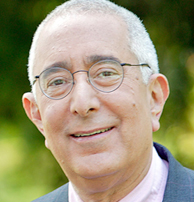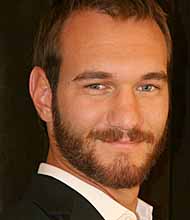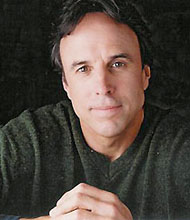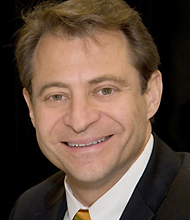| TRAVELS FROM |
|
SPEAKING FEE RANGE ** Please note that while this speaker’s specific speaking fee falls within the range posted above (for Continental U.S. based events), fees are subject to change. For current fee information or international event fees (which are generally 50-75% more than U.S based event fees), please contact us. $50,000 to $75,000 |
|
BOOK VIJAY GOVINDARAJAN speakers@coreagency.com |
| TRAVELS FROM |
|
SPEAKING FEE RANGE* $50,000 to $75,000 |
|
Book Vijay Govindarajan speakers@coreagency.com |
- The man behind the theory of “reverse innovation,” described by Harvard Business Review as one of its “Great Moments in Management in the Last Century.”
- Coxe Distinguished Professor at Dartmouth’s Tuck School of Business and the Marvin Bower Fellow at Harvard Business School.
- A prolific author with publications including The Three Box Solution, Beyond the Idea, and Reverse Innovation.
- Dubbed “#1 Indian Management Thinker” in Thinker 50’s latest ratings.
Vijay Govindarajan is known in both academic and professional circles as one of the world’s leading authorities on strategy and innovation. Govindarajan, who goes by “VG,” holds not one, but two prestigious endowed positions: he is the Coxe Distinguished Professor at Dartmouth’s Tuck School of Business and the Marvin Bower Fellow at Harvard Business School.
Prior to re-entering the world of academia, Govindarajan was General Electric’s first “professor in residence” and the company’s chief innovation consultant. He worked with GE’s Jeff Immelt to forge the theory of reverse innovation, a term that describes innovations made first in the developing world. Govindarajan and Immelt’s research was published in the Harvard Business Review, which named reverse innovation as one of its “Great Moments in Management in the Last Century.” Govindarajan was named the #1 Indian Management Thinker in Thinker 50’s latest ratings.
His interest in strategy and innovation in the context of the developing world has propelled Govindarajan into exciting new fields of inquiry, including co-leadership of a global initiative to build a $300 house. Firms and individuals around the world are engaged in developing the ideas and technologies necessary to make this dream a reality.
Govindarajan’s books include the recently published The Three Box Solution, Beyond the Idea, and Reverse Innovation. He has won Harvard Business Review’s illustrious McKinsey Award twice for his contributions and publishes frequently in both professional and academic journals. Govindarajan has also served on the faculties of INSEAD (Fountainebleau) and the Indian Institute of Management in Ahmedabad.
Vijay Govindarajan’s customized presentations equip his audiences to put well-tested tactics for strategic planning into practice. A consummate teacher with a talent for distilling complex ideas, Govindarajan provides tools any organization can use to execute innovation and build relevant new competencies.
Govindarajan’s research offers unique insight for globally oriented individuals and organizations. His pioneering research into reverse innovation enables him to provide important guidance about how to develop new ideas in developing markets first, rather than “scaling down” products initially intended for wealthier countries.
Beyond marketing opportunities, Govindarajan believes that the experiences and innovations of the developing world offer important lessons for the rest of us. Govindarajan explains how the structure and practices of the Indian healthcare system offer ideas U.S. healthcare providers may want to take on board – lest they find themselves displaced!
STRATEGY IS INNOVATION
VG customizes his presentation on Strategy is Innovation to fit a given audience and situation.
We now live in an era of constant change, driven by the dynamic forces of technology, globalization, the Internet, changing demographics, and shifting customer preferences. As a result, companies find that their strategies need almost constant redefinition—either because the old assumptions are no longer valid, or because the previous strategy has been imitated and neutralized by competitors. Rooted in these premises, the strategic and organizational challenges become:
INNOVATION EXECUTION
Implementing Box 3 breakthrough innovation projects is the triple-flip-with-a-quadruple-twist of general management. No matter how talented and experienced the leader, chances are that this is a new and unfamiliar challenge. VG can help you understand the three fundamental challenges faced by Box 3 strategic experiments, and can offer several specific recommendations to help you overcome them.
Even world-class companies with successful business models eventually hit the ceiling on growth. That’s what makes emerging industries so attractive. These markets represent huge opportunities for capturing long term growth and competitive advantage. But because they lack a proven formula for making a profit, they are risky and expensive—with dire consequences for failure.
Vijay Govindarajan argues that every organization’s survival depends on Box 3 breakthrough innovations that target such untested markets, but few firms understand how to implement them successfully. Too many managers think that a great idea is enough to get them from business plan to profitability, but somewhere in the middle of the innovation process, most organizations stumble. Govindarajan reveals where firms go wrong on their journey from idea to execution—and outline exactly what it takes to build a breakthrough business while sustaining excellence in an existing one.
Based on an in-depth, multiyear research study of innovative initiatives at over 50 large corporations, Vijay Govindarajan identifies three central challenges to strategic innovation:
Govindarajan explains how to overcome these challenges by rewiring the "organizational DNA" across four main areas: staffing, structure, systems, and culture, in order for a promising new venture to succeed. He also spells out the critical role senior executives must play in managing the inevitable tensions that arise between today’s business and tomorrow’s.
Breakthrough growth opportunities can make or break companies and careers. Govindarajan can present a guide to execution in unexplored territory.
REVERSE INNOVATION
Historically, multinationals innovated in a rich country and sold those products in a poor country. Reserve Innovation is doing exactly the opposite. It is about innovating in a poor country and selling those products in a rich country. Reverse Innovation is a Box 3 strategy.
In this presentation, VG introduces the idea of developing new business models in emerging markets first—instead of scaling down rich-world products—to unlock a world of opportunities for your business. Stemming from a pivotal article in Harvard Business Review, his reverse innovation presentation offers an important next step for companies looking to derive long-term value from emerging markets. According to VG, "Reverse innovation is a potent force that will transform the global economy over the next few decades. It will redistribute power and wealth to countries and companies who understand it and diminish those who do not."
VG offers a glimpse at strategies from some of the world’s leading companies—from GE and Deere & Company to P&G and PepsiCo. There is no one industry that needs to reverse innovate; instead, all industries must have interest in the needs and opportunities in the developing world in order to thrive in tomorrow’s global marketplace.
HBR picked reverse innovation as one of the Great Moments in Management in the Last Century. Reverse Innovation was a New York Times and Wall Street Journal best seller.
DELIVERING WORLD-CLASS HEALTHCARE, AFFORDABLY
In this presentation, VG explains how innovative Indian hospitals are delivering high-quality healthcare at prices 95% below American hospitals. Although the context is very different in these two countries, there are lessons that U.S. healthcare leaders can learn and apply.
To provide high-quality care at ultra-low costs, private Indian hospitals have adopted three techniques: 1) hub-and-spoke networks; 2) task shifting; and 3) basic frugality. These approaches enable these hospitals to maximize the number of patients served, while benefiting from economies of scale. In the years ahead, U.S. healthcare providers should learn about and consider adopting these principles as they strive to expand access, improve quality, and reduce costs. If U.S. providers don’t change, they actually risk being disrupted by these efficient, low-cost Indian providers.

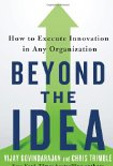
Beyond the Idea
Companies stumble when they imagine that innovation is mostly about ideas. The reality is that ideas are only beginnings. Indeed, even a company with the world’s best idea still faces a devilish challenge: it must build the business of tomorrow without endangering the business of today.
Vijay Govindarajan and Chris Trimble are the world’s leading authorities on the successful management of innovation. In Beyond the Idea, they distill more than a decade of research and insight into a practical, accessible, read-at-one-sitting handbook that offers invaluable guidance for anyone charged with making innovation happen: executives, managers, consultants, project leaders, and teams.
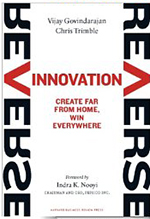
Reverse Innovation
Reverse Innovation is the new business idea everyone is talking about. Why? Because it presents the blueprint for scaling growth in emerging markets, and importing low-cost and high impact innovations to mature ones.
Innovation is no longer the exclusive domain of the Silicon Valley elite. Reverse Innovation will open your eyes to the fact that the dynamics of global innovation are changing—and if you want your firm to survive, you’d better pay attention. The gap between rich nations and emerging economies is closing. No longer will innovations travel the globe in only one direction, from developed to developing nations. They will also flow in reverse. CEOs of the world’s most influential companies agree and have cited Reverse Innovation as their playbook for the next generation of global growth.
Authors Vijay Govindarajan and Chris Trimble of the Tuck School of Business at Dartmouth explain where, when, and why reverse innovation is on the rise and why the implications are so profound. Learn how to make innovation in emerging markets happen and how such innovations can unlock even greater opportunity throughout the world. You’ll follow some of the world’s leading companies (including GE, Deere & Company, P&G, and PepsiCo) through stories that illustrate exactly what works and what doesn’t.
If you’re in a Western economy, you need to accept that the future lies far from home. But the idea is not just for Western audiences. If innovation is at the heart of your company or your career, no matter where you practice business, Reverse Innovation is a phenomenon you need to understand. This book will help you do that.

 VIDEO
VIDEO PROGRAMS
PROGRAMS BOOKS
BOOKS




